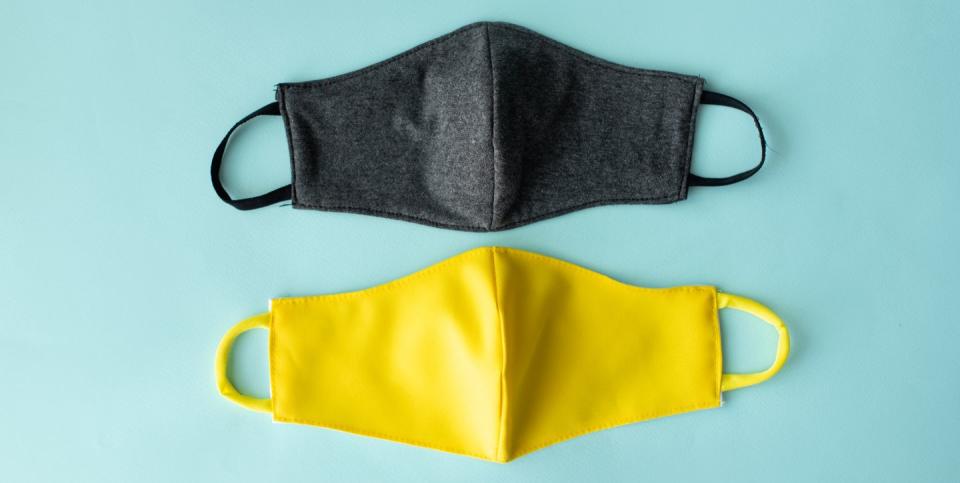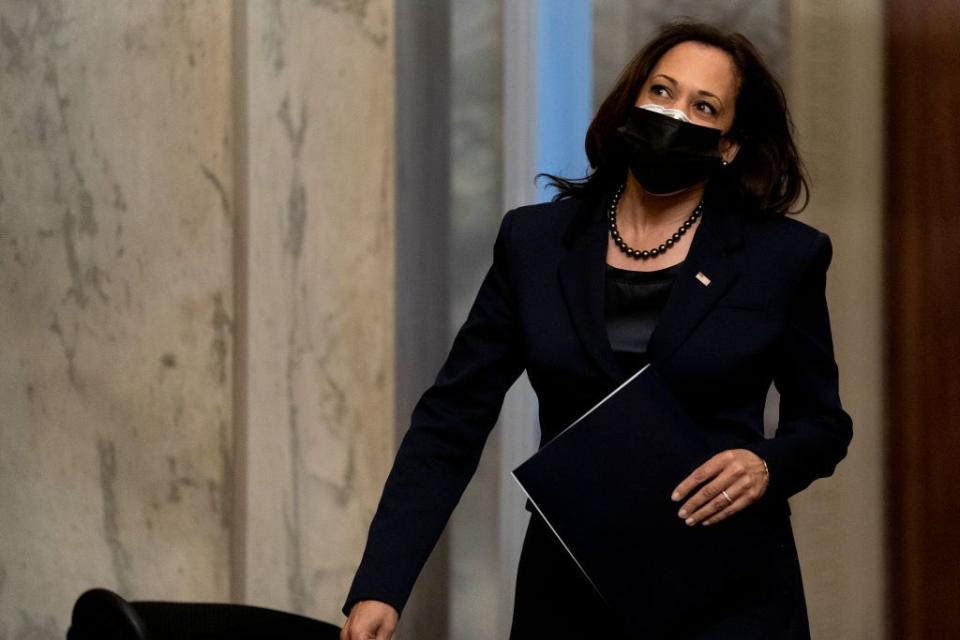Doctors Explain if Layering 2 Face Masks Offers More Protection Against COVID-19

While some people are still pushing back against wearing a face mask in public despite strong evidence that covering the nose and mouth helps protect the wearer and those around them from COVID-19 infection, others are taking their level of protection one step further by doubling up and wearing two.
Layered face masks have been spotted on everyone from President Elect Joe Biden to New England Patriots coach Bill Belichick to essential workers on public transportation and at the grocery store.
But is wearing two face masks actually more effective than wearing one? And is it even safe to layer up? We asked experts to weigh in.
Is wearing two face masks more protective against COVID-19 than one?
First, there’s plenty of science to support wearing one face mask. Research shared by the Centers for Disease Control and Prevention (CDC) suggests that having people wear masks can dramatically reduce the spread of COVID-19, and subsequently, hospitalizations and deaths from the novel coronavirus.
For example, one often-cited study of two hair stylists who had COVID-19 found that none of the 67 clients they worked on over an eight-day period who consented to testing developed an infection. The stylists and their clients wore masks at the time of their interaction. Another study of healthcare workers in Boston found that there was a significant drop in positive coronavirus test results after mask-wearing was adopted by staff.
“The goal of using a mask is to create a barrier,” says infectious disease expert Amesh A. Adalja, M.D., senior scholar at the Johns Hopkins Center for Health Security. “If you’re using some kind of flimsy mask, then having a double mask may help.” But he adds that “it’s not something that every person needs to do.”
There’s no concrete data on the additional benefits of double masking yet, but experts have some theories on when it could be worth considering, especially if you’re wearing a non-medical grade face covering (as most of us are).
“Double masking adds an extra layer of filter, making it even more difficult for the drops of moisture ridden with the virus to get to you or to spread to others,” says Aline M. Holmes, D.N.P., R.N., a clinical associate professor at the Rutgers University School of Nursing. She says it could serve as bonus protection for people who are in high-risk settings for coronavirus transmission, like a hospital or nursing home.
It could also be a good idea to double up if you’re sick with COVID-19 and want to do everything you can to protect other people in your home from contracting the virus. (Note: You should still be isolated away from others whenever possible.)
However, many experts “don’t think it’s necessary,” including William Schaffner, M.D., an infectious disease specialist and professor at the Vanderbilt University School of Medicine. “I’m glad there are some people doubly committed to wearing a mask, but it’s not been studied,” he says. “Double masking may provide some additional protection in both directions — out as well as in — but it’s not officially recommended by anyone at this time.”

Worth noting: Some doctors layer face masks as a way to help protect their valuable N95 respirators.
“When I go into a COVID patient’s room, I wear two — an N95 respirator with a surgical one over it,” says Richard Watkins, M.D., an infectious disease physician and a professor of internal medicine at the Northeast Ohio Medical University. “When I come out, I throw away the surgical one and keep the N95.” The goal, Dr. Watkins says, is to help protect his N95 mask for future use, given that supplies are limited.
Both New England Patriots coach Bill Belichick in the photo above and Vice President Elect Kamala Harris in the photo below have been seen using this technique, for an example. They have medical-grade masks on below either a cloth covering or surgical mask, most likely to preserve the respirator for future use.

Is wearing two face masks safe?
If you choose to wear two face masks, it’s “not going to hurt you” as long as you can still breathe easily, Dr. Adalja says. If you feel restriction, you will still have a layer of protection by sticking to one mask.
There also doesn’t seem to be any “right” way to do this or any particular type of mask that is a better fit for this method. “Just make sure the first mask fits well over your nose and mouth,” Dr. Schaffner says.
Plus, it’s important to remember that wearing two face masks doesn’t mean you should stop social distancing from people outside of your household and washing your hands thoroughly and frequently. “If you’re doubling up your mask and still engaging in risky behavior, that’s not going to help you,” Dr. Adalja says.
You Might Also Like

 Yahoo Finance
Yahoo Finance 